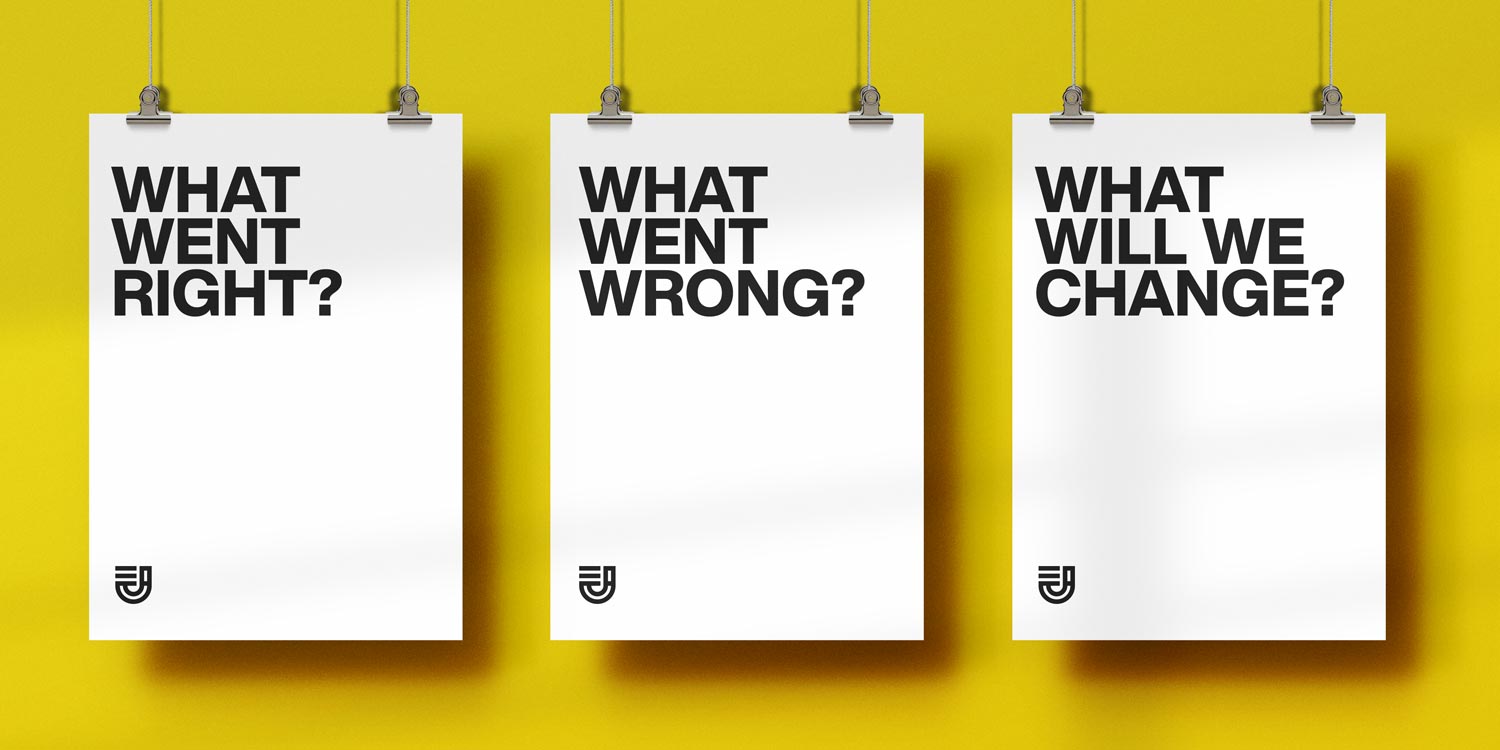Some go swimmingly. Some are total disasters. When things go smoothly, we often think, “Check me out! I’m a total rock star!” When a project goes awry, we tend to point fingers at the client and say things like, “They don’t know what they are doing” or “This client is a total idiot, and doesn’t know anything about design.” I’ve had all those thoughts throughout my career and none of them helped me improve my business.
The only way to truly grow in your ability to execute projects successfully is to learn something new every time, whether the project was awesome or disastrous. The only ways to guarantee that you will accurately analyze each project is to have a postmortem meeting. Traditionally, a postmortem refers to the examination of a body after death. A doctor will dissect the body and its organs to determine cause of death and make other medical assessments. By performing postmortem reviews, doctors have made significant discoveries that have led to great progress in medicine. You can do the same for your creative business.
After each project is complete, put on your lab coat and grab your scalpel; a careful dissection of the cadaver is in order. This simple agenda will help ensure that you are learning from your experiences and not making the same mistakes over and over again. Below is a look into our medical (er…project) examination process.

Postmortem Agenda
- Project Name: ___________
- Success Rating (1=disaster, 10=heavenly):___________
- What went right? ___________
- What went wrong? ___________
- What will we change? ___________
Take notes and keep a log of all of your postmortem meetings. Put them in a place where everyone on your team has access to them to make sure that others can learn lessons from your experiences. Dig deep and be brutally honest with yourself when answering these simple questions.
When analyzing the project to discover “what we did right and wrong,” be careful not to be vague in your answers. Here are a few examples that present a good usage versus a bad usage of the postmortem experience. For this example let’s suppose that the project was a complete disaster. The client hated everything you did, and you ended up giving them all their money back in hopes that you will never see them again.
Bad Postmortem Example
Project Name: Bait and Tackle Shop Website
Success Rating (1=disaster, 10=heavenly): 1
What went right/wrong?
- This project blew up because the client didn’t understand what it takes to build a website.
What will we change?
- Don’t work with bad clients who know nothing about web design.
The above example highlights the fact that the client was clueless. Great; we all knew that. A better use of the postmortem evaluation would be to create a list of characteristics of a clueless client and then create some changes in your process to ensure that you are not caught off-guard by a clueless client in the future.
Good Portmortem Example
Project Name: Bait and Tackle Shop Website
Success Rating (1=disaster, 10=heavenly): 1
What went right/wrong?
- This project blew up because the client didn’t understand what it takes to build a website. Here are some specific things that happened that identify a potential problem client:
- The client asked a ton of questions.
- The cient was condescending in their tone of voice.
- The client cut the price and scope of the project three times before giving the green light.
- The client seemed unwilling to put time and effort into making the project succeed.
What will we change?
- During the proposal phase of the project we will watch out for the attributes above that can identify a problem client. If we see these attributes, we will have a heart-to-heart with the client and make sure they are on board with working toward a successful finished product. If we feel that the client will be a problem client, we will cancel the project before it starts.
Here are two more examples of bad and good usage for a postmortem on a successful project that can help you repeat the success.
Bad Postmortem Example
Project Name: Car Wash Logo
Success Rating (1=disaster, 10=heavenly): 9
What went right/wrong?
- This project went great because Sally designed an awesome logo.
What will we change?
- Have Sally do all our logo designs in the future.
It is unrealistic that you can have Ssally, your All-Star designer, do every future logo. The goal is to figure out how to replicate Sally’s success on the logo. What does Sally do to generate that level of success?
Good Postmortem Example
Project Name: Car Wash logo
Success Rating (1=disaster, 10=heavenly): 9
What went right/wrong?
- This project was a huge success. Sally designed a great logo and was on the same page with the client. Here are some of the key things that Sally did that helped her get into the client’s head and get to know what they wanted for their logo design:
- Developed concept sketches presented to the client prior to doing design work.
- Called the client to discuss the concept sketches in detail.
What will we change?
- We are implementing a requirement that every logo project includes a phase of concept sketches prior to beginning the design work.
A postmortem review of every project that comes through your doors (whether the project was a massive success or an epic failure) can help to ensure that you don’t repeat bad experiences and that you do all you can to duplicate the good ones. These meetings don’t have to be long or overly formal; something as small as a few minutes of learning from the past can make a world of difference in the future. I built my agency and wrote two books from the lessons learned using this simple strategy. I hope it helps you improve your creative business as much as it helped mine.












